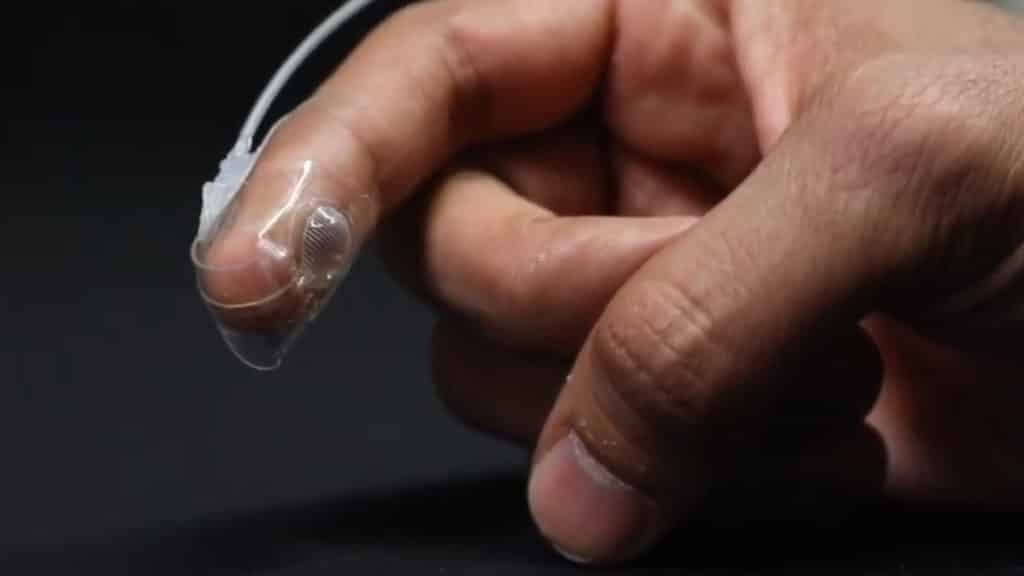Ready for an ultrathin layer of wearable skin? It may be precisely what we need for haptic feedback in our virtual experiences. There’s several haptic solutions coming to the market, from full-body suits to HMD attachments that will enhance VR with aromas. And there are more on their way. But they all have that feel (apologies for the pun) of early virtual reality – clunky hardware that requires too much focus on the technology. Great when it works, but bulky and time-consuming to set up.
Tech Radar summed it up:
Virtual reality has come on in leaps and bounds over the years, but tactile sensations have been notable by either their absence or their crudity.
Nothing comes close to the ease of Oculus Quest in setting up a virtual space and stepping into VR. It’s time haptic technology caught up.
The idea for a layer of wearable skin comes from Swiss scientists at the École Polytechnique Fédérale de Lausanne’s (EPFL) Reconfigurable Robotics Lab (RRL). It’s a thin layer that would adapt to the movements of your body and provide tactile sensations. In other words, without cumbersome hardware, you could feel like you were touching something in VR. Or being touched by something – or someone – else.
It seems like the ideal solution – especially with Oculus’s announcement last week at OC6 of hand tracking for the Quest HMD. The one downside to giving up our controllers is the lack of haptic feedback. The ultimate wearable – a thin, wearable skin would instantly solve the issue. And provide a much deeper sense of presence.

The Wearable Skin Prototype
The Swiss solution isn’t on the market yet, but there is a working prototype. Details are spelled out in an article in Soft Robotics, “Closed-Loop Haptic Feedback Control Using a Self-Sensing Soft Pneumatic Actuator Skin.”
Here’s the description from Tom’s Guide,
The engineers’ prototype claim that they can offer touch feedback in real time at a 100Hz frequency and with a force of one newton, the force needed to accelerate one kilogram at one metre per second squared in one direction.
According to the research, their ‘SPA-skin is a multifunctional multilayer system that can readily be implemented as a high-speed wearable bidirectional interface for contact sensing and vibrotactile feedback.’ In other words, if you wear gloves or a suit made of this artificial skin, it will allow you to feel a surface in a virtual reality world. Or something touching you.
The skin will not stop you from moving your fingers, though. When the actuators get activated, they inflate the membranes to give you the illusion of touch but it won’t stop you from moving your fingers beyond the surface of the object.
A 30-second video shows the creative if still clunky prototype.
Harshal Sonar, the lead author of the paper, describes the critical breakthrough in Tech Radar.
This is the first time we have developed an entirely soft artificial skin where both sensors and actuators are integrated. This gives us closed-loop control, which means we can accurately and reliably modulate the vibratory stimulation felt by the user.
Right now, it’s limited to a finger attachment. But the goal is for a wearable skin that could cover a larger area, such as your entire hand. And possibly more in the future.
Sonar continues,
The next step will be to develop a fully wearable prototype for applications in rehabilitation and virtual and augmented reality. The prototype will also be tested in neuroscientific studies, where it can be used to stimulate the human body while researchers study dynamic brain activity in magnetic resonance experiments.
VR and AR Applications
As Harshal Sonar points out, a wearable skin could have applications across the board. There’s the obvious use in medical and scientific research and education. But it could find it’s way into augmented reality applications as well.
Will we walk down the street someday with our AR Glasses and wearing a second tactile feedback skin for gloves? It’s no more farfetched than what we do now, clutching miniature computers and staring incessantly at our screens.
But stretch this a little further and imagine the possibilities for immersive storytelling in VR and mixed reality. What if the characters in a story could hand you virtual objects you could actually touch? Or grab your hand when they wanted to show you something?
As these technologies rapidly evolve, we’re only scratching the surface of where augmented and virtual reality will take us.
In the future, the visual aspect will be only one element of the multilayered virtual experiences that will be part of our everyday lives.
Emory Craig is a writer, speaker, and consultant specializing in virtual reality (VR) and generative AI. With a rich background in art, new media, and higher education, he is a sought-after speaker at international conferences. Emory shares unique insights on innovation and collaborates with universities, nonprofits, businesses, and international organizations to develop transformative initiatives in XR, GenAI, and digital ethics. Passionate about harnessing the potential of cutting-edge technologies, he explores the ethical ramifications of blending the real with the virtual, sparking meaningful conversations about the future of human experience in an increasingly interconnected world.

